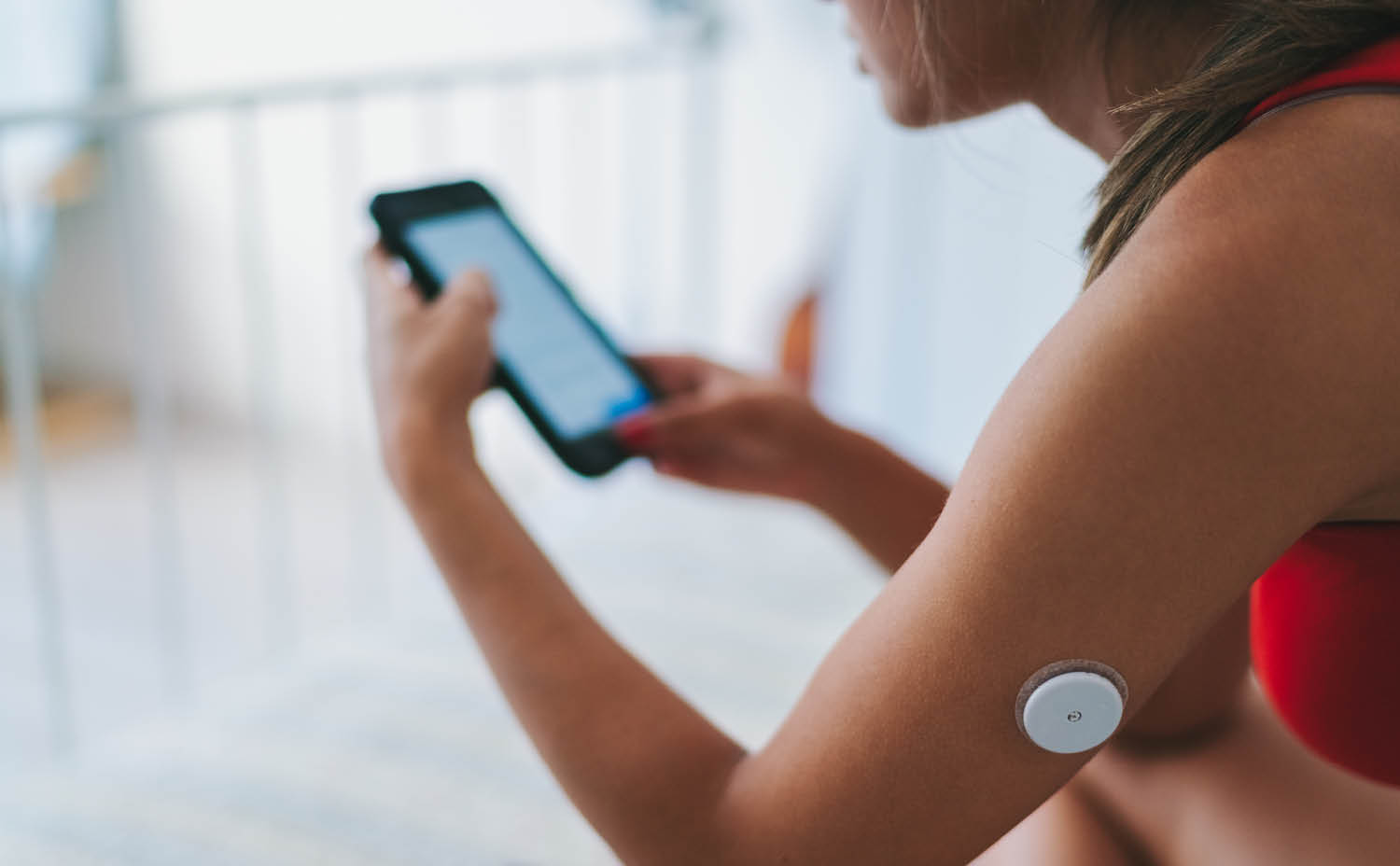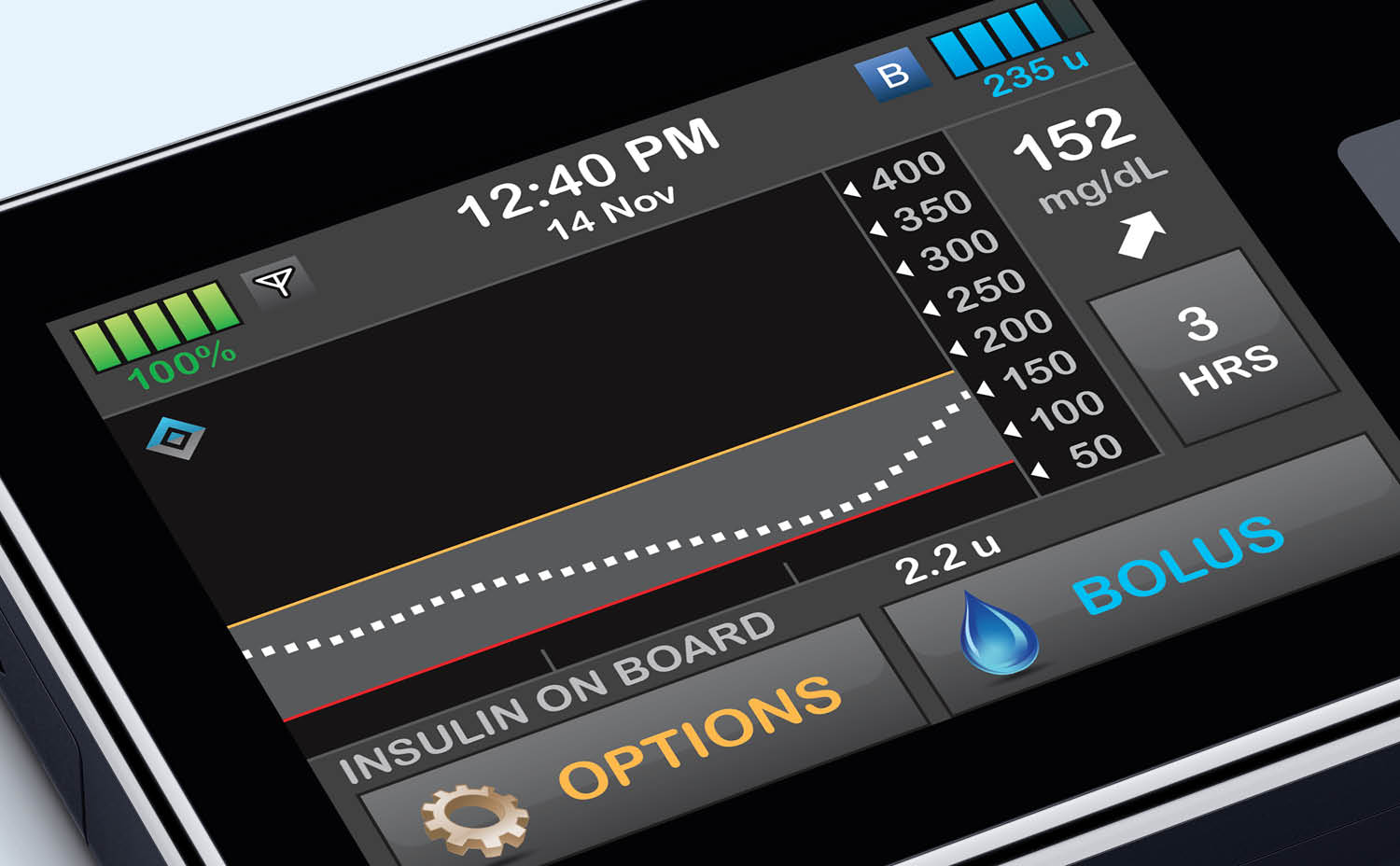Understanding how to manage diabetes starts with learning about glucose, how to maintain healthy glucose levels, and what activities impact glucose fluctuation in the human body. This applies to people who are living with type 1 diabetes or type 2 diabetes.
Glucose, also referred to as blood sugar or blood glucose levels, are constantly changing during the day. Whether at rest, at play, eating, or drinking, the body is always looking for energy. Glucose is where it finds it.
What is Glucose?
The term “macronutrients” refers to essential elements the body needs. In terms of food, the main three are carbohydrates, fats, and proteins.
Glucose is a type of sugar/carbohydrate that is either stored away in the liver until it’s needed, or it is entering cells and providing energy.
In order for glucose to enter a cell, it needs the hormone insulin, which serves as a metaphorical “lock and key” that allows glucose to be metabolized by the body.
How Do Insulin and Glucose Work Together?
Here’s an easy-to-follow explanation from Jordan Pinsker, vice president and medical director at Tandem Diabetes Care and a leading pediatric endocrinologist:
“Your body stores glucose in the liver when you absorb it, and can also release it as needed,” Dr. Pinsker explained. “You eat more glucose as fuel. It’s a constant interplay. Glucose is going out, it’s coming in, insulin is helping your body to use it, or helping to store it away. Cells all over the body — the brain, the heart — are all asking for glucose. Insulin helps mediate that and lets the cells absorb it.”

Glucose and Diabetes
When someone is living with type 1 diabetes, their body doesn’t create enough, or any, insulin — the hormone that’s produced in the pancreas and is responsible for telling cells to allow glucose to enter and convert to energy.
When someone is living with type 2 diabetes, their body has built up a resistance to insulin.
Type 1 diabetes, which was once called juvenile diabetes because the majority of diagnoses came prior to adulthood, is an autoimmune condition. Type 2 diabetes, however, is a condition that develops over time and could take years to diagnose. In both cases, glucose is unable to be absorbed by the body and used as energy.
This inability, or inefficiency, to properly convert glucose into energy through the use of insulin is at the root of diabetes.
Symptoms of Type 1 Diabetes and Type 2 Diabetes
While the symptoms of type 1 diabetes and type 2 diabetes are similar, when they present can be very different. With type 1 diabetes, the symptoms are more likely to present quickly and are often more severe at the time of diagnosis. With type 2 diabetes, however, these symptoms can take much longer, sometimes years, to develop and more often progress gradually.
(Please note that the following symptoms may not be an indication of type 1 diabetes or type 2 diabetes for all individuals. Please consult a healthcare professional for further information.)
- Frequent urination: This can occur because there is too much glucose in the blood and the kidneys are forced to flush it out through urine
- Thirst: Like frequent urination, frequent thirst can be caused by an excess of high blood sugar
- Nausea and/or vomiting: An inconsistent metabolism from fluctuating glucose levels may lead to a feeling of nausea or vomiting (NOTE: If someone has already been diagnosed with diabetes and is experiencing nausea or vomiting, this may be a sign of a serious condition called diabetic ketoacidosis.)
- Irritability: Mood swings can occur when there are changes in blood glucose
- Atypical hunger: Excessive hunger can happen because the cells can’t convert blood sugar into energy
- Unexpected weight loss: Even with an increased hunger and consumption, weight loss can still occur
- Fatigue, sometimes extreme: With either form of diabetes, the body is unable to properly create energy, which can lead to fatigue
- Blurred vision: Large amounts of glucose can cause swelling inside the eyes. This complication can last for several weeks or more.
- Tingling or numbness in extremities: This is typically a form of nerve damage that occurs over a long period of time
- Recurrent infections: For example, this could include yeast infections

What Are Acceptable Glucose Levels?
There is no one-size-fits-all answer to this question because there are varying factors depending on the person, their diagnosis, and when they are tested relative to their last carbohydrate intake. Some tests occur right after a meal. Others can be done after fasting.
For someone living with type 1 diabetes, an acceptable glucose target level is considered 70-180 mg/dL (milligrams per deciliter). It is important to recognize that someone with diabetes may have excellent management of their glucose and still not achieve glucose levels of someone without diabetes all of the time.
“If you don’t have type 1 diabetes, your blood sugar might be 80, then you have a meal and it goes to 95,” explained Dr. Pinsker. “For you, that might be normal. But for someone with type 1 diabetes, their insulin and glucose don’t act as quickly. There are delays from the insulin entering the body when it has to be injected through the skin. Exercise could also impact that. It’s very difficult to balance.”
How is Glucose Measured?
In the early days of diabetes management and research, getting accurate blood glucose measurements were difficult and inaccurate since the primary method was urine samples.
Today, there are several methods. Some require a very small amount of blood taken from either fingersticks or other sites on the body.
There are also subcutaneous devices called continuous glucose monitoring (CGM) sensors that insert a small electrode below the skin and can read blood glucose levels every few minutes. When paired with an insulin pump, like the t:slim X2™ insulin pump with Control-IQ® technology from Tandem Diabetes Care, they can create what’s called automatic insulin dosing through the use of a predictive algorithm.
Monitoring Your Blood Glucose Levels with the t:slim X2 Insulin Pump
The t:slim X2 insulin pump with Control-IQ technology is cleared for type 1 diabetes management in people as young as six and has been shown to increase time in range (TIR)* and improve sleep. When paired with the Dexcom G6 CGM sensor (sold separately) there are zero fingersticks,† and the t:slim X2 insulin pump with Control-IQ technology can anticipate glucose levels 30 minutes in advance and automatically adjust dosing.
Visit tandemdiabetes.com/control-iq to learn more.
Unless otherwise noted, all medical information was provided by Jordan Pinsker, MD and Molly McElwee Malloy, RN, CDCES of Tandem Diabetes Care, Inc.
*As measured by CGM.
† Zero fingersticks required when using the t:slim X2 pump with Dexcom G6 continuous glucose monitoring (CGM) integration. If glucose alerts and CGM readings do not match symptoms or expectations, use a blood glucose meter to make diabetes treatment decisions.
RESPONSIBLE USE CONTROL-IQ TECHNOLOGY
Control-IQ technology does not prevent all highs and lows. You must still bolus for meals and actively manage your diabetes. Please visit tandemdiabetes.com/tslimX2-use for more information.
Important Safety Information
RX ONLY. The t:slim X2 pump and Control-IQ technology are intended for single patient use. The t:slim X2 pump and Control-IQ technology are indicated for use with NovoLog or Humalog U-100 insulin.
t:slim X2 insulin pump: The t:slim X2 insulin pump with interoperable technology is an alternate controller enabled (ACE) pump that is intended for the subcutaneous delivery of insulin, at set and variable rates, for the management of diabetes mellitus in people requiring insulin. The pump is able to reliably and securely communicate with compatible, digitally connected devices, including automated insulin dosing software, to receive, execute, and confirm commands from these devices. The t:slim X2 pump is indicated for use in individuals six years of age and greater. Control-IQ technology: Control-IQ technology is intended for use with a compatible integrated continuous glucose monitor (iCGM, sold separately) and ACE pump to automatically increase, decrease, and suspend delivery of basal insulin based on iCGM readings and predicted glucose values. It can also deliver correction boluses when the glucose value is predicted to exceed a predefined threshold. Control-IQ technology is intended for the management of Type 1 diabetes mellitus in persons six years of age and greater.
WARNING: Control-IQ technology should not be used by anyone under the age of six years old. It should also not be used in patients who require less than 10 units of insulin per day or who weigh less than 55 pounds. |
Control-IQ technology is not indicated for use in pregnant women, people on dialysis, or critically ill patients. Do not use Control-IQ technology if using hydroxyurea. Users of the t:slim X2 pump and Control-IQ technology must: use the insulin
pump, CGM, and all other system components in accordance with their respective instructions for use; test blood glucose levels as recommended by their healthcare provider; demonstrate adequate carb-counting skills; maintain sufficient diabetes self-care
skills; see healthcare provider(s) regularly; and have adequate vision and/or hearing to recognize all functions of the pump, including alerts, alarms, and reminders. The t:slim X2 pump and the CGM transmitter and sensor must be removed before MRI,
CT, or diathermy treatment. Visit tandemdiabetes.com/safetyinfo for additional important safety
information.